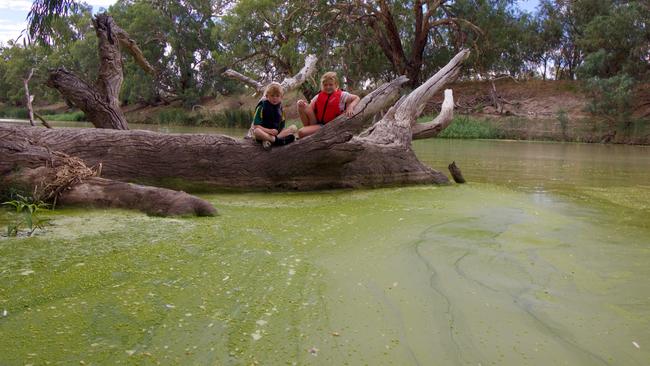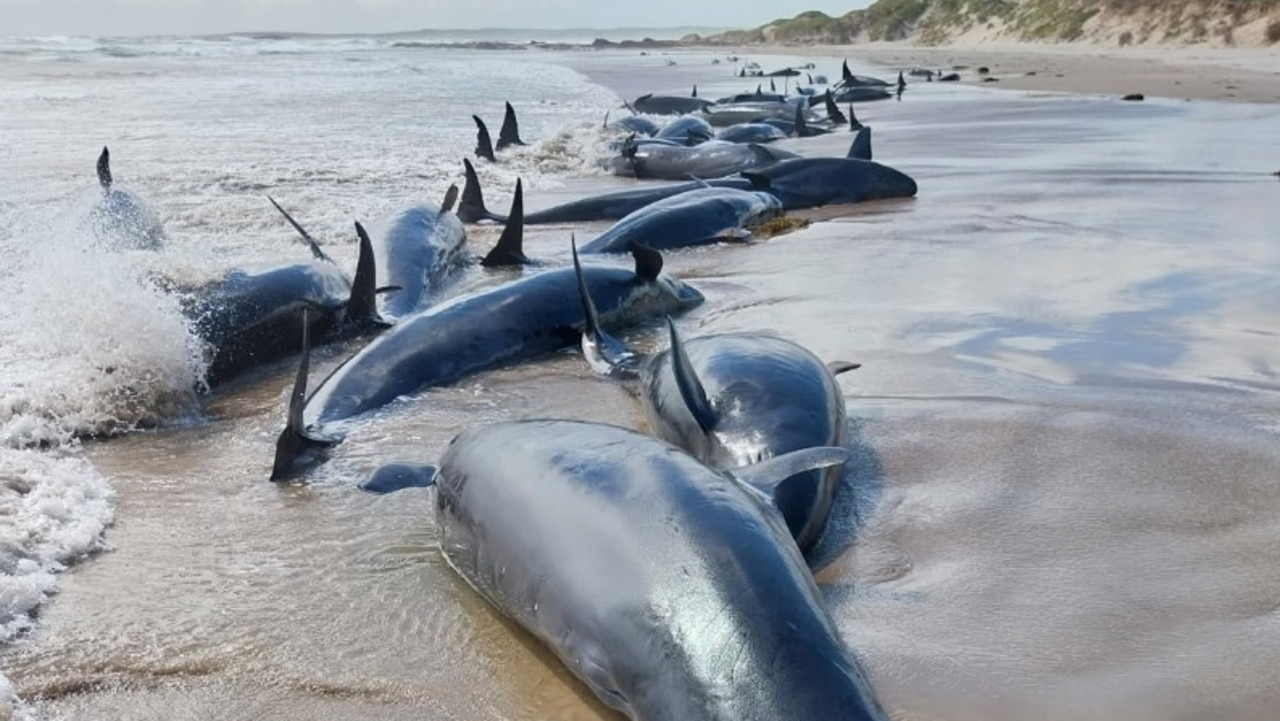Toxic algae alert for Murray-Darling
Authorities have issued a ‘red alert’ for the river below Menindee Lakes.

Toxic blue-green algae has grown to dangerous levels in parts of the Murray-Darling, with authorities issuing a “red alert” for the river below Menindee Lakes.
WaterNSW said the blue-green algae, a paint-like scum that coats the water and appears as greenish clumps, posed a threat to livestock and warned that mussels or crayfish from the area should not be eaten.
Other parts of the river system — around Red Cliffs and Nangiloc — have had a “red alert” warning issued since late last month, leading to concerns about the health of the Murray-Darling.
The presence of toxic blue-green algae in early 2019 triggered mass fish deaths near Menindee, a town in far western NSW, in the midst of an intense drought.
Residents in Darling communities say the severe algae bloom means they will not be able to use the river until at least the end of March, and raised concerns that an inability to use the river would inhibit local tourism.
The area is popular for boating and fishing, they said.
Menindee resident Graeme McCrabb, said he was worried that conditions would deteriorate to levels that killed up to a million native Murray cod in 2019.
“It’s got uglier and uglier by the day,” Mr McCrabb said.
“There’s 40km of algae through the Menindee Weir Pool, and probably 300km of river all the way down south … this is a worse build-up 12 months out than what it was when we had the fish kills,” he said.
“We’ve had reasonable rains in different parts of the basin but we’re still sitting here with the water we got in March — we haven’t got any genuine inflows since then. We’re in the same window, similar volumes of water in the river. The worry will be without inflows, you can just about guarantee we will have fish kills again.”
The fish kills in 2019 — a major environmental disaster — wiped out Murray cod as long as 1.4m and up to 100 years old.
Blue-green algae, a microscopic bacteria, builds in stagnant water when the river is not flowing. “It is not possible to predict how long the algae will remain at high levels,” WaterNSW said.
Southern landowners blame irrigation in the northern basin for reducing flows and allowing algae to bloom.
The Australian last week reported serious concerns about how authorities were managing water flow down the river, with irrigators given the green light to pump despite regular flows being below the usual extraction threshold under new rules.
Water Minister Melinda Pavey’s office said the rule was not designed to distinguish between categories of water. “It is designed to achieve the connectivity from the Queensland border to Menindee Lakes,” a spokeswoman said.
“The rule has never existed before and resumption to flow water was always intended to be protected until certain targets were met at the Barwon-Darling River.”
That water was flushed down the river system after 90 days of no flows at Wilcannia in an attempt to restore flows to parts of the river that had dried up and to increase connectivity between northern and southern parts of the system.
Some of these flows have made their way to Wilcannia, but it is unlikely these flows will be enough to flush the algae bloom.
WaterNSW said the supply in the Lower Darling was not reliant on upstream flows due to sufficient water in the Menindee Lakes. There will be enough water in the lakes for another 12 months and it was currently 18 per cent full, the agency said.
Maryanne Slattery, a researcher who previously worked for the Murray-Darling Basin Authority, said there was not enough water in Menindee.


